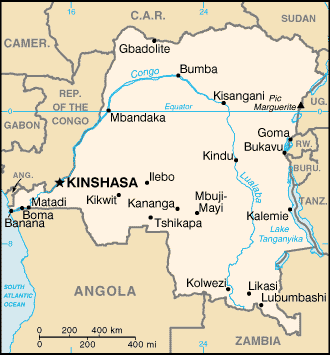By NewsDesk @bactiman63
One case of circulating vaccine-derived poliovirus type 2 (cVDPV2) was reported in week ending on May 5 in Kamonia, Kasai State, Democratic Republic of the Congo (DRC). The onset of paralysis was reported on February 8.
This is the first cVDPV case in DRC in 2019. DRC is affected now by four separate cVDPV2 outbreaks, in the provinces of Haut Katanga; Mongala; Haut Lomami/Tanganika/Haut Katanga/Ituri and Kasai.
A reactive vaccination campaign has been conducted in Kamonia health zone, in Kasai province from 9 to 11 May 2019.
The last indigenous wild poliovirus case was reported in 2000.
According to the Global Polio Eradication Initiative, vaccine-derived polioviruses (VDPVs) are rare strains of poliovirus that have genetically mutated from the strain contained in the oral polio vaccine. The oral polio vaccine contains a live, attenuated(weakened) vaccine-virus. When a child is vaccinated,the weakened vaccine-virus replicates in the intestine and enters into the bloodstream, triggering a protective immune response in the child. Like wild poliovirus, the child excretes the vaccine-virus for a period of six to eight weeks. Importantly, as it is excreted, some of the vaccine-virus may no longer be the same as the original vaccine-virus as it has genetically altered during replication.


